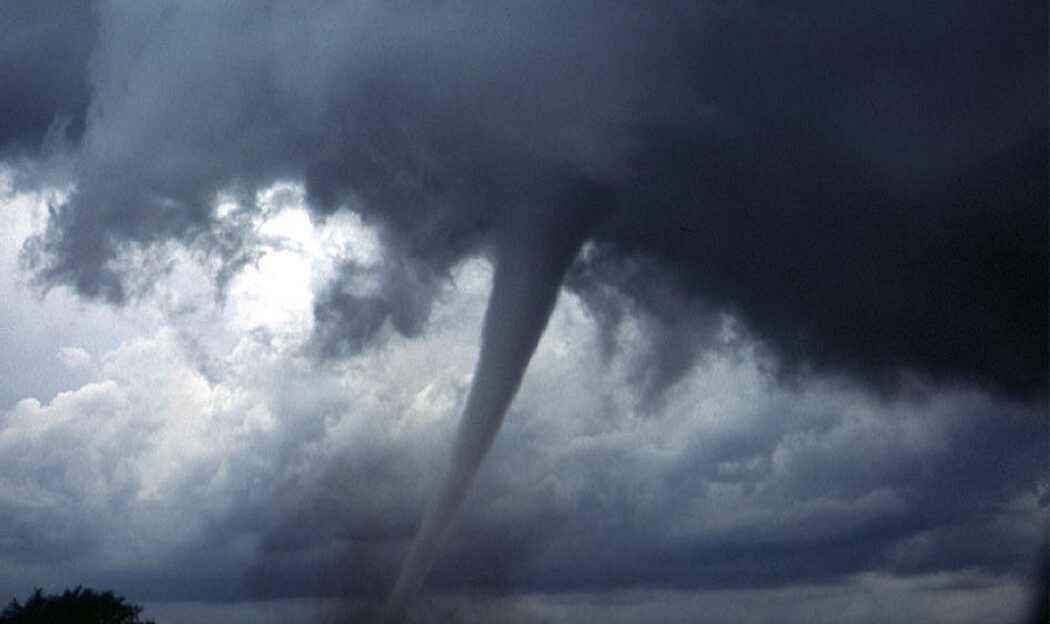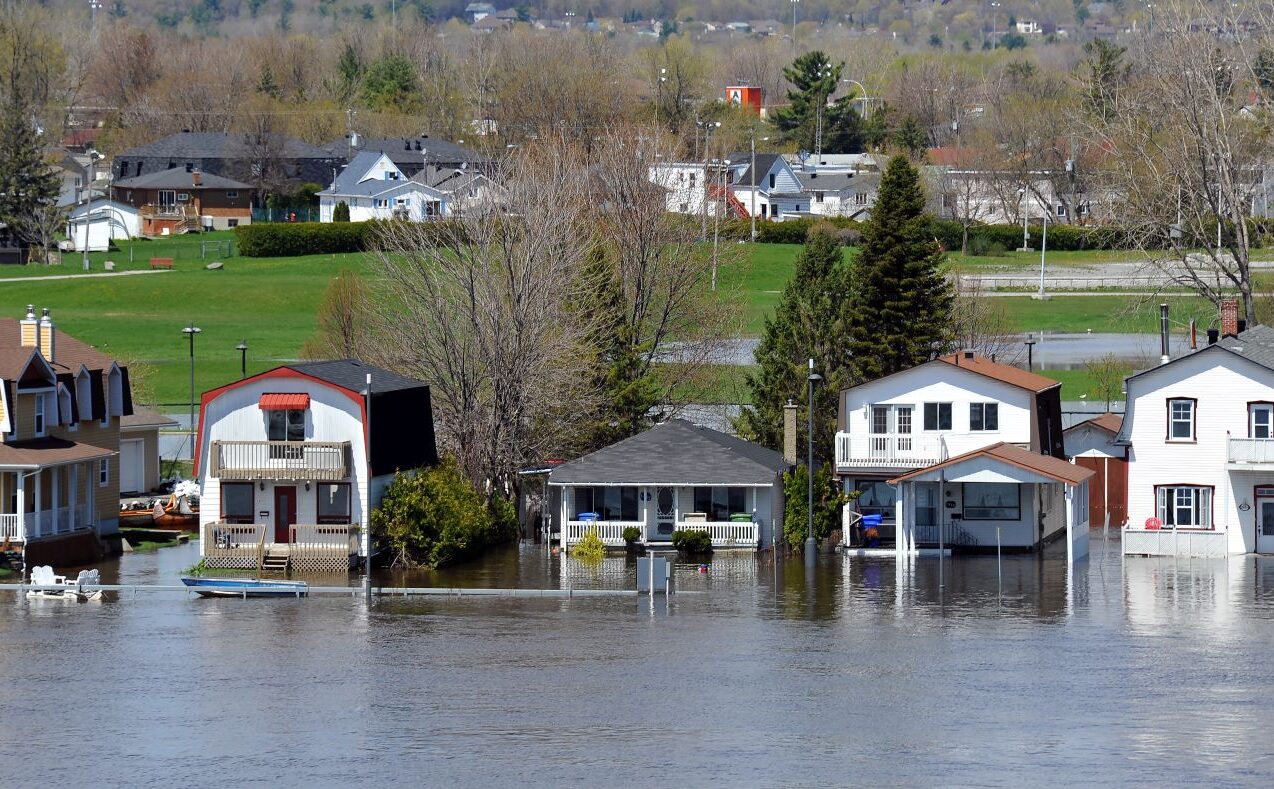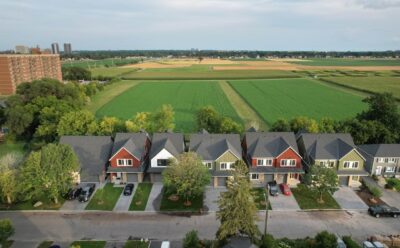Can you protect your home against climate change?
That you need to do so is clear.
The destruction wrought this year by post-tropical storm Fiona in Atlantic Canada and the derecho here in Ottawa; heat waves in western Canada and the U.S. in 2021, including the hottest temperature ever recorded in this country when Lytton, B.C., hit almost 50 C before being destroyed by wildfire; tornadoes in Ottawa and Gatineau in 2018; frightening floods over the past decade from British Columbia to Newfoundland: the destruction is staggering and it’s growing.
Climate experts are generally careful not to make a causal relationship between specific events and climate change. But, with Canada warming at twice the rate of the rest of the world, they do see a link between the two and foresee increased intensity and frequency of weather events.
As Gary Martin, a specialist in residential sustainability who teaches at Carleton University, explains in an email, “I will (cautiously) state that climate science is linking climate change with significant long-term changes to regional climate patterns coupled with constant new records (ie. for heat events).”
Nothing you do will stop a tornado from carrying away your home. But there is plenty we can all do to protect our homes against the intense heat and rain, high winds and other weather events that are related to climate change.

What is a changing climate doing to our homes?
“The most significant threat to homes in our region is flooding,” according to Martin. Homes built in flood-risk areas, inadequately maintained municipal infrastructure, the destruction of wetlands and other natural water-absorbing features, failure to grade our own properties correctly: they all contribute to flood losses.
Those losses can be considerable. The average cost of a basement repair after flooding cost $43,000 in 2018, according to the Insurance Bureau of Canada’s latest available figures.
Without remediation, residential flooding is almost certain to increase in the future. A 400-plus-page report on climate projections in the National Capital Region notes that if high greenhouse gas emissions continue — a near-certainty in light of the tepid outcome of the COP26 talks on controlling global temperature increases — the region will see increased rainfall volumes and intensity.
Increased rainfall and intensity mean not just a greater risk of flooding but also the potential for damaging water infiltration through roofs, walls and foundations.
The report says we can also look forward to a lot more heat, with average temperatures rising by 1.8 C in the 2030s and almost double that by the 2050s.
A recent article on the “heat dome” that descended over British Columbia, Washington and Oregon this summer reports an ambient temperature of over 51 C in an area of Portland, Ore., where asphalt and high-rise apartments that are crowded together absorb and retain heat, known as a heat island. We’re not Portland, but the heat island effect, already evident in Ottawa on a hot summer’s day, is something our own city could see amplified even as we try to combat climate change through intensification.
Our homes and our well-being could also be threatened in other scenarios described in the National Capital Region climate report, which says, “conditions favourable for extreme events such as freezing rain, tornadoes and wildfires are projected to become more common.” Even if they don’t destroy our homes, such events can damage or age them prematurely unless we take precautions.
Ways to protect your home against climate change
Whether renovating, building new or simply practising good household maintenance, you can mitigate many effects of a warming planet on the place you call home. Some of the mitigation strategies are more expensive than others, but remember it’s almost invariably cheaper to prevent damage than to repair it.

Flooding
Do you think flooding happens only elsewhere?
“In Canada, flooding is the threat responsible for the greatest amount of financial losses and damage as well as being the threat for which we are least prepared,” according to the Insurance Bureau of Canada. One in 10 Canadian homes is at high risk of flooding and it’s estimated up to 10 per cent of homes are uninsurable due to flooding, says a report by CBC’s Marketplace.
Because they are at least partly below grade, basements are particularly susceptible to flooding, a risk you can reduce with the 10 steps suggested in the Intact Centre on Climate Adaptation’s Home Flood Protection Program.
Those steps range from ensuring the tops of window wells are no less than 10 centimetres above grade and installing window well covers (less than $45 at Home Depot), to relying on a backwater valve to protect against a sewer backup if, for instance, intense rainfall overloads the municipal sewer system or your own sewer line gets blocked or damaged (cost of the valve runs from several hundred to well over $1,000).
Other must-dos include regularly checking your sump pump’s operation and ensuring you have backup battery or other power in case of an electricity outage. If you hear a major storm is on the way, make sure your sump pump and backup plans are working properly before the storm strikes.
You may be eligible for financial assistance to install a backwater valve or sump pump under the City of Ottawa’s Residential Protective Plumbing Program.
(A battery backup may keep your sump pump running during a power outage, but you’ll need a whole-home generator — upwards of $10,000, including installation — to keep your refrigerator and freezer, furnace, lights and other essentials going during an outage.)
You should also make sure grading around your home directs water away from the foundation. Think your grading is fine? In an email, Blair Feltmate, head of The Intact Centre on Climate Adaptation, says a recent survey by the centre of 700 homes in four provinces found 69 per cent of those homes had grading that directed water toward the foundation.
If you’re looking at an addition or custom-built home, Martin says deep overhangs can help keep water away from the foundation (they can also keep the intense summer sun away from windows).
When renovating or adding to an existing home, renovator Phil Coe, owner of Ottawa’s Revision Built, says, “We don’t stop at simply… tying into existing weeping tile without first checking that the system is actually working i.e., draining properly.”
You’ll find more tips on preventing basement flooding in this article. Remember to check your home insurance policy for flood and other climate-related coverage as well as keeping an up-to-date inventory of your possessions in case they are destroyed, lost or stolen.
You should also have an emergency kit ready in the event your family has to deal with a flood or any other disaster.
Water infiltration
Protecting against moisture infiltration when renovating or building a home, is “all about water management and understanding how to deal with driving rain that’s going to get through the cladding,” says Jeff Hurdis, lead designer at Lagois Design·Build·Renovate.
Lagois uses vertical strapping under the cladding so water that does penetrate the cladding can drain away and allow the cavity to dry. The right approach is to be “really strict on sealing the water barrier — using high-quality material, the proper tape, the proper flashing — so that any water that does get to that layer never gets to the structure.”
Other ways to control water infiltration include re-caulking doors and windows as necessary, keeping gutters clean, which means checking them regularly, and inspecting your roof semi-annually and after intense storms.
If your gutters drain into your weeping tiles (a drainpipe that goes into the ground is one clue), a heavy rainfall could overwhelm the tile, causing basement flooding. Consider cutting the drainpipe above ground level and adding a two-metre horizontal extension so the water drains away from your foundation.

Crippling heat & wildfires
The report on climate change projections in the National Capital Region forecasts temperature based on a 1981-2010 baseline. The report assumes that a low-emission scenario in coming decades is “unlikely” and forecasts temperature ranges based on moderate to high emissions.
According to the report, the National Capital Region saw about 11 days a year that reached 30 C in the baseline period. Models “project an increase to approximately 25-28 days in the 2030s, 32-43 days in the 2050s and 36-72 days in the 2080s. That is twice as many hot days in the 2030s, 3-4 times as many in the 2050s, and 3-6 times as many in the 2080s.”
If that sounds ominous, consider the fact that, according to Statistics Canada, in 2019 almost one in five Ottawa homes had no air conditioning.
And if you do have air conditioning, do you want to be pouring money into cooling your home with electricity when there are alternatives?
“With the changes in climate conditions and the prominence of global weather events on every news and social media platform, we are being asked more regularly about mitigation techniques,” says Steve Barkhouse, president of Amsted Design-Build. He adds that every home is different and a solution to one problem may cause another problem, so a whole-home approach is best.
Barkhouse points to increased insulation and good window performance — for example triple-glazed windows — as ways to keep a home cool in intense heat spells (and warm during the winter). Landscaping and plantings, wind and sun patterns, and design can also influence climate effects on a home.
Dave Sneyd, president of Window Works, agrees high-performance windows make a difference. “From an energy standpoint, certainly triple glazing would keep out the heat and cold in various climates more than double-glazed.” He notes that budgets have to be taken into account because triple-glazed windows cost roughly 20 per cent more than double-glazed.
Martin says natural ventilation (opening windows at night), window treatments and shading, and avoiding dark, heat-absorbing colours for roofs and walls can mitigate intense summer heat (the Australian state of New South Wales, which includes the city of Sydney, is moving to ban dark roofs as one way to combat heat island effects, although roofing materials also make a difference in heat absorption and release).
“Attic ventilation is critical and often deficient,” Martin adds, and an asphalt driveway collects and radiates heat (it also puts extra pressure on the city’s storm water system), so think about light-coloured permeable pavers or even gravel as an alternative.
Learn more about keeping your home cool in summer.
While projections for the National Capital Region anticipate a significant increase in very hot days (and humidity), we can expect shorter winters, fewer days below -10 C and less snowfall overall. Winter freeze-thaw cycles, which can play havoc with water infiltration from ice dams on your roof, are expected to increase and there may be more freezing rain.
Wildfires, whether in forests, brush or grasslands, are expected to increase with climate change. Wildfires may not be something most suburban and urban homeowners in Ottawa worry about, but our region is just outside Ontario’s fire management zone (a fire management zone helps guide how wildfires are prioritized and managed) and Ottawa’s rural residents may be closer to forested areas. Barkhouse says exterior cladding like cement board is one “good, cost-effective solution” to the threat of wildfires, and Lagois’ Hurdis points to fire-rated aluminum panels as another cladding possibility, along with brick.
The Intact Centre on Climate Adaptation lists a number of strategies for protecting against wildfires, from removing flammable leaves and debris from gutters and decks to installing non-combustible surfaces like rock within 1.5 metres of your home.

Damaging winds
When it comes to wind, the climate change report on the National Capital Region makes no projections on changes in average intensity, but does say “the occurrence of conditions favourable to extreme weather (such as freezing rain, tornadoes, lightning, hurricanes, and wildfires) is projected to increase.”
Heavy winds have already prompted Cardel Homes to discontinue the use of standard three-tab roof shingles in favour of heavier architectural ones, says Keith Blair, vice-president of production. “Architectural shingles are more resistant to heavy wind and wind damage.”
Changes to asphalt shingle standards are among the proposed climate-related updates to the Canadian building code, which should be released in the coming weeks.
Cardel has also made some changes to construction methods, including the way it installs weather barriers beneath exterior cladding.
Hurricane ties, designed to improve the connection and strength of roofs and houses so they can better resist extreme weather, are another consideration for additions, new builds and reinforcing existing roofs. They are not required by the building code, but Barkhouse says they are part of “best building practice.”
However, Blair says there are mixed opinions as to whether they should be part of the building code or not and points to a recent article on hurricane ties — also called hurricane strapping and clips — in Barrie Today that looks at both sides of the argument (a tornado in Barrie this summer caused an estimated $100 million in damages).
Canada experiences more tornadoes than any other country except the U.S., according to the Institute for Catastrophic Loss Reduction, which has published a series of helpful online pamphlets about increasing our homes’ resiliency in the face of climate change.
The institute’s pamphlet on wind says residences, unlike better-engineered hospitals and public buildings, are “especially vulnerable to severe wind damage” and recommends multiple strategies for homeowners, from ensuring ridge and off-ridge vents are rated for high winds to installing pressure- and impact-rated entry and garage doors. It also cautions never to leave a patio umbrella up when not in use because “it can easily be picked up by the wind and turned into a missile.”

Climate change now means mitigation and adaptation
Climate change is here and while that means turning some of our attention to adaptation, it doesn’t mean we can forget about reducing the degree of change.
Strategies like better insulation and installing solar panels will not only make our homes more climate-resilient, they’ll also reduce the amount of greenhouse gases we’re pouring into the atmosphere.
There’s also much we can do on a macro scale, from demanding better protection of wetlands to reduce the severity of flooding, to pushing our political and business leaders to help us reach our national Net Zero goals.
When looking at adaptation, programs like the Canada Greener Homes Grant can help defray the cost of upgrading your home’s insulation, moving to solar energy, waterproofing your foundation and more.
The City of Ottawa’s Better Homes Ottawa – Loan Program offers interest-free loans to help reduce our carbon footprint, and utilities often have incentives. For example, natural gas supplier Enbridge offers up to $5,000 in rebates for energy-efficiency improvements.
The Canadian Home Builders’ Association has launched a Net Zero Home Labelling Program for Renovations (a Net Zero home produces as much electricity as it uses, typically through solar panels). Like its counterpart for new-build homes, the program is meant to help Canada meet its commitment to be Net Zero by 2050. The CHBA website includes a list of Net Zero builders and renovators in Ottawa.
Meanwhile, U.S.-based ClimateCheck, which assesses the long-term risk a home faces because of climate change, could open in Canada in the near future. That means climate resiliency and risk may soon start figuring into the process of selling your home and the price it fetches.
Floods and searing heat; upgrading shingles and installing pressure-rated doors; wondering if a climate resiliency rating is going to make your home tough to sell: If you feel overwhelmed, you’re not alone. Climate change and its effects, both current and potential, are big, complicated and evolving, so much so that the world’s leaders often seem as bewildered as the rest of us.
But we can make a difference, both individually and collectively. It starts by making our homes safe for our families and ripples outward to our neighbourhood, our city, our province and beyond. From cleaning out window wells to asking our renovators, home builders, political representatives and ourselves what they and we are doing to make our homes resilient and the world greener — all these things matter more than we imagine.
Checklist to help protect your home against climate change
Flooding
□ Keep window wells clear of debris, raised 10 cm above grade and covered
□ Install a backwater valve to protect against sewer backup
□ Check your sump pump and ensure you have backup battery power
□ Ensure grading directs water away from your foundation
Water infiltration
□ Ensure cladding and flashing keeps water outside your walls and roof
□ Check window and door caulking and inspect your roof semi-annually
□ Keep gutters clear of leaves and debris to prevent overflowing
□ Install drainpipe extensions to direct water two metres from foundation
Heat & wildfires
□ Increased insulation and triple-glazed windows to keep heat outside
□ Trees to help mitigate summer heat
□ Window treatments, light-coloured roofs and walls, and attic ventilation
□ Light-coloured permeable pavers instead of an asphalt driveway
□ Fire-resistant cladding and keeping combustibles away from your home
Wind
□ Durable architectural rather than three-tab shingles when replacing your roof
□ Hurricane ties to strengthen connections between structural members
□ Roofing materials and roof vents that are high-wind-rated
□ Pressure- and impact-rated doors and garage doors
Editor’s note: Updated from an article originally posted November 30, 2021.









